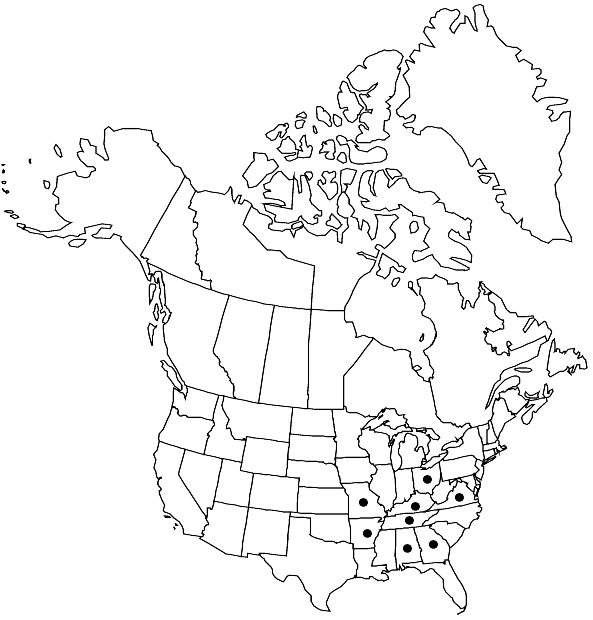Weissia sharpii
Bryologist 76: 133, figs. 9, 10, 12–24. 1973,.
Leaves deltoid to ovate, base ovate or rectangular, shoulders weak or absent, distal laminal margins loosely inrolled or occasionally sharply incurved, apex channeled or somewhat cucullate, acute to broadly acute, mucro sometimes weak but usually strong, of (1–) 5–9 cells; costal adaxial stereid band smaller than the abaxial; distal laminal cells 10–13 µm wide. Sexual condition autoicous. Seta elongate, 0.5–1.5 cm. Capsule stegocarpic, ovate, operculum differentiated, falling, peristome present, teeth absent, rudimentary to ligulate.
Phenology: Capsules mature spring.
Habitat: Calcareous rock, cedar-oak bluffs, cedar barrens
Elevation: moderate elevations
Distribution

Ala., Ark., Ga., Ky., Mo., Ohio, Tenn., Va.
Discussion
Weissia sharpii is a comparatively large species, and may be mistaken for Trichostomum crispulum, which, however, has erect distal laminal margins and commonly a strongly cucullate apex. Weissia sharpii has many of the characteristics of the European species W. condensa including large distal laminal cells, ca. 10–13 µm, and large mucro, of ca. 7–9 cells; W. sharpii has a reduced peristome, W. condensa is eperistomate or occasionally has a very reduced peristome. With reciprocal transplantation experiments, A. J. Shaw (1987) found W. sharpii and W. controversa to be closely related, but distinguishable by a few discontinuous characters: leaf length-width ratio, distal leaf width, and width of the gap between involute leaf margins. These are in addition to differences in chromosome number and ecology.
Selected References
None.